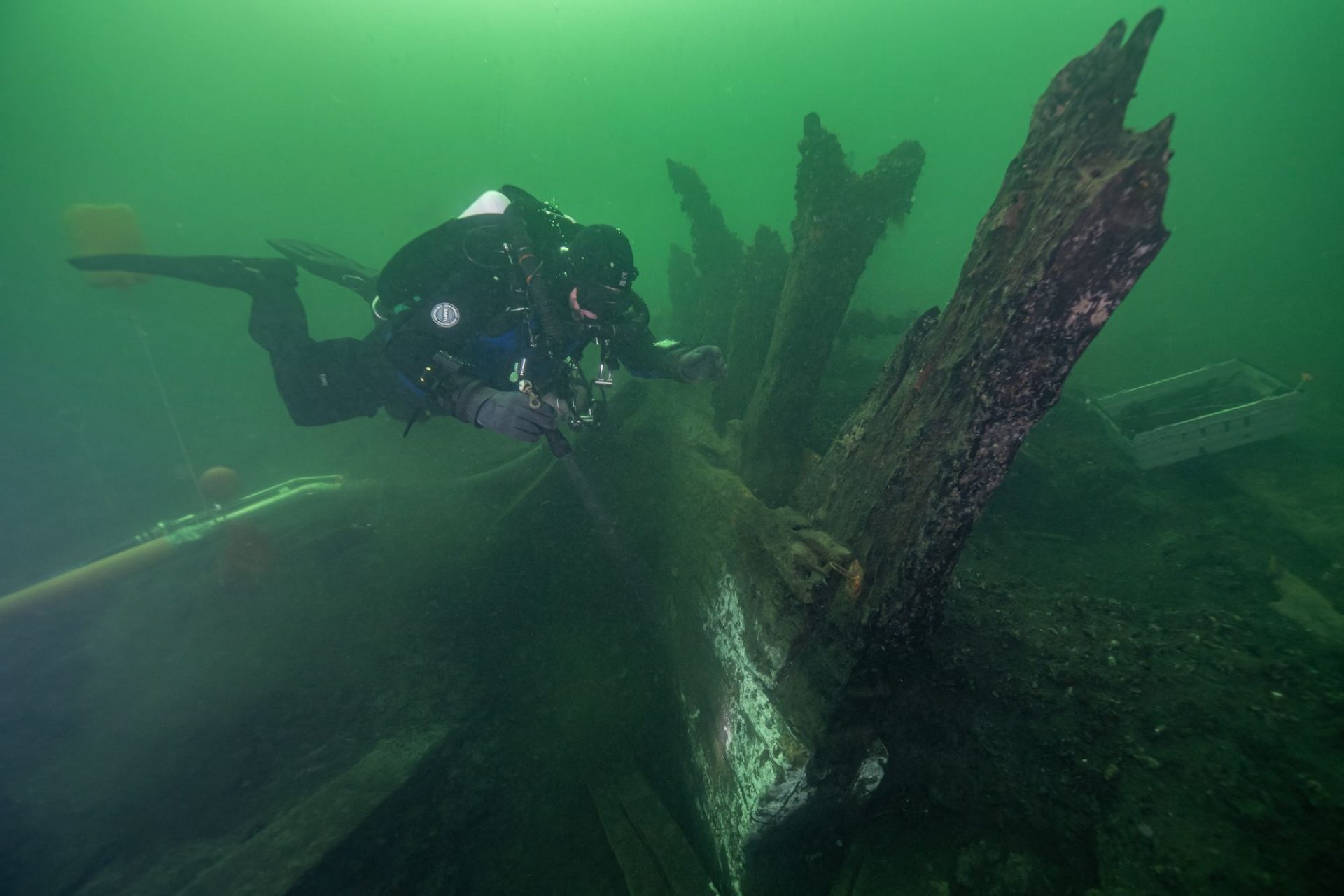Underwater archaeologists have made new discoveries at the Gribshunden shipwreck, the flagship of John, King of Denmark.
The Gribshunden was a Danish warship which sank in 1495 in the Baltic Sea off the coast of Ronneby, Sweden. The first mention of the ship is in a letter written by King John in 1486 which reads: “in navi nostra Griffone”, Latin for “in our ship Griffon”.
While anchored in a natural harbour near the port of Ronneby, the Gribshunden mysteriously caught fire and sunk, an event which was recorded in the contemporaneous Swedish Sturekrönikan (The Sture Chronicle) and in two German sources, Reimar Koch’s Lübeck Chronicle and Caspar Weinreich’s Danzig Chronicle.
A diving club first discovered the wreck in the 1970’s at a depth of 10 m (33 ft), but unaware of the significance, the identity of the wreck wouldn’t be confirmed until 2013. The wreck is internationally significant as the world’s best-preserved ship from the Age of Exploration – a proxy for the vessels of Christopher Columbus and Vasco da Gama.
As part of a study conducted by underwater archaeologists from Lund University, Blekinge Museum, and the Danish Viking Ship Museum, the researchers have recovered artillery, handguns, and major components of the steering gear and stern castle.
“No other ship from the time of exploration has survived this intact,” says scientific leader Brendan Foley from Lund University. “Gribshunden delivers new insights into those voyages. We now understand the actual size and layout of those ships that changed the world.”
Lund University PhD candidate Paola Derudas and Viking Ship Museum specialist Mikkel Thomsen combined 3D-models of the artillery, rudder, tiller, and keel to recreate the sterncastle. This is the section of the ship the king and noblemen likely occupied, in addition to gunners and steersmen.
In the bow of the ship, 3D models of the stem post and hawse pieces (through which the anchor lines passed) provide clues about the forecastle’s functions of crew accommodation, ship handling, and fortification.
“Another big puzzle remains: what really caused Gribshunden to sink?”, Foley asks. “Medieval documents state there was fire and an explosion, but we have not seen any signs of that. Maybe next year’s excavation will provide evidence of the catastrophe”.
Header Image Credit : Brett Seymour





